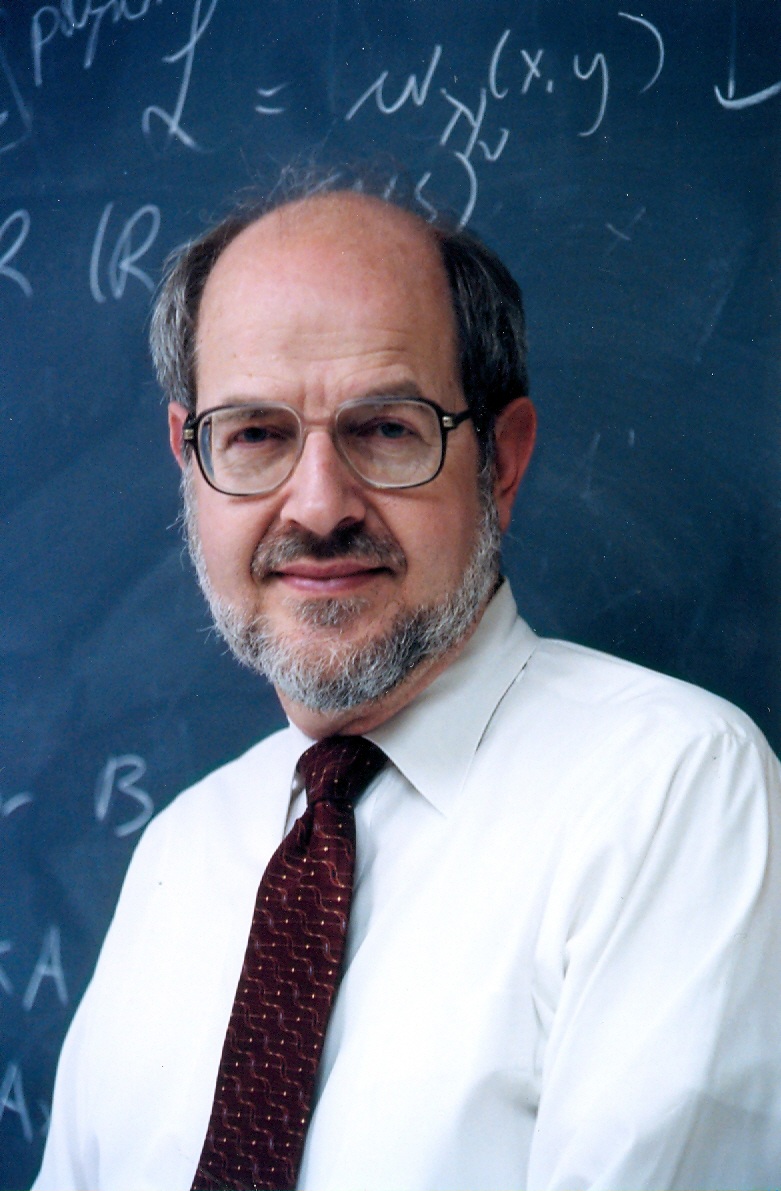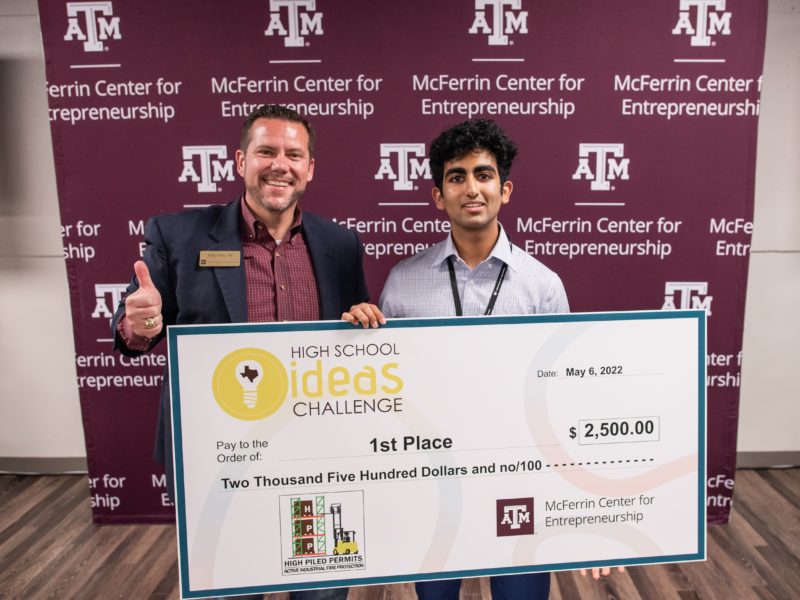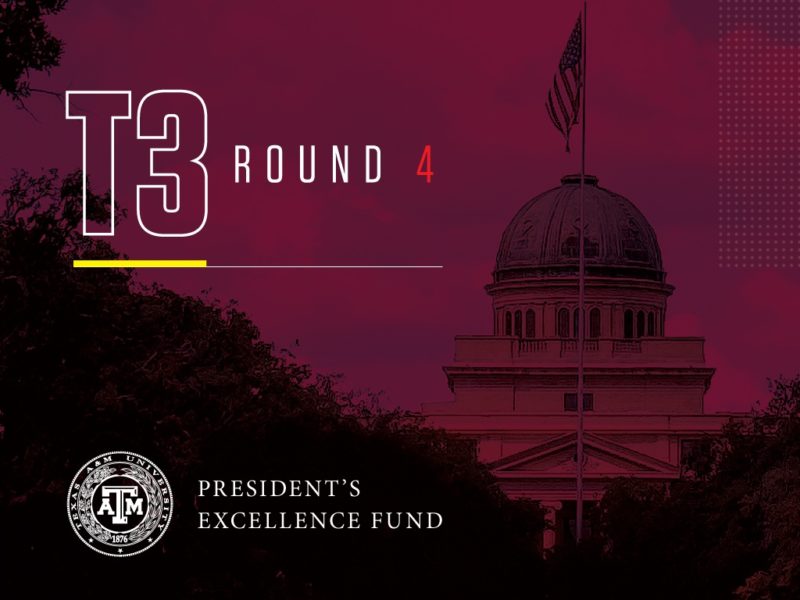
Dr. Ronald G. Douglas, longtime mathematician and distinguished professor as well as former executive vice president and provost of Texas A&M University, passed away Tuesday, February 27, at the age of 79.
Funeral services were held Saturday, March 3, at First Presbyterian Church of Bryan for Douglas, an esteemed researcher and scholar in the areas of operator algebras and operator theory who came to Texas A&M in 1996 as executive vice president and provost and a tenured professor in the Department of Mathematics.
“I first learned of Ron when I read one of his beautiful books as a graduate student, but I only met him in person when he came to Texas A&M as provost in 1996,” said Dr. Emil J. Straube, professor and head of Texas A&M Mathematics. “I was very impressed by how he kept up his scholarship through his administrative years. In fact, when he returned to the department, he did some of his best work. He quickly grew into the role of elder statesman, and as department head, I have benefited tremendously from his counsel. Ron Douglas was an eminent scholar, a generous person and a true friend. I will miss him.”
Born in 1938 in Osgood, Indiana, Douglas earned his doctorate in mathematics at Louisiana State University in 1962. He was a professor of mathematics at the University of Michigan until 1969, when he moved to the State University of New York at Stony Brook, where he was a professor of mathematics and later vice provost in 1990. Douglas remained at SUNY at Stony Brook until he came to Texas A&M in 1996. He also held previous visiting professor positions in Sweden, Israel, England and Australia.
Douglas served as executive vice president and provost at Texas A&M until 2002. During that time, he was appointed as a distinguished professor of mathematics in 1999. He remained active in research and graduate student mentorship until the time of his death.
An Academic Leader and Global Visionary
During Douglas’ tenure as provost, Texas A&M established itself as a national leader in doctorates awarded to minorities in mathematics, the physical sciences and engineering. One of his main priorities as Texas A&M’s top academic officer was recruiting additional students to the university’s campuses to teach and conduct research in STEM-related areas, which he saw as vital to an increasingly technology-oriented global economy.
Douglas’ global vision proved central to another of his crowning achievements as provost: the creation of Texas A&M’s branch campus in Qatar. Texas A&M University at Qatar opened its doors in fall 2003, initially offering four engineering degrees and featuring plans for two future research centers that would provide related opportunities for faculty and graduate students. In May 2017, Texas A&M at Qatar graduated its largest class ever, awarding bachelor’s degrees to 110 students as well as 14 master’s of science and master’s of engineering degrees in chemical engineering.
“Ron Douglas came to Texas A&M as an internationally known mathematician with a history of major accomplishments in the areas of operator theory and operator algebras,” said Texas A&M President Emeritus Dr. Ray M. Bowen ’58, a professor emeritus of mechanical engineering who hired Douglas during his eight-year tenure as president from 1994 to 2002. “He also came with vast experience as an academic leader, having served as a department head, a dean and a vice provost. Within a short time, Ron established himself as an academic leader for Texas A&M who always displayed integrity, respect for teaching and scholarship, and kindness toward everyone. He was fearless in his passion for the students and faculty of Texas A&M.
“His accomplishments during his six and one-half years as Vice President for Academic Affairs and Provost are many. Our admission into the Association of American Universities was aided by having an academic leader of his eminence as provost. Our later authorization to have a Phi Beta Kappa Chapter was the result of his ability to manage the rigorous evaluation process used by that organization. It was his idea and leadership that created the Blinn Team Program which, these many years later, is respected throughout public higher education as an innovative and unique way to encourage transfer students. Toward the end of his time as provost, he made decisions that led to the subsequent creation of Texas A&M Qatar. I think it should be evident to all that Texas A&M University is stronger today because of the efforts of Ron Douglas during his years as our provost.”
A Revolutionary Researcher and Reformer
Beyond his considerable academic and administration acumen, Douglas also was active on the national education policy and reform scene. He is considered the father of what came to be known as the calculus reform movement during the late 1980s. As then-chairman of the Department of Mathematics at SUNY at Stony Brook, he had begun researching methods to change the way calculus was taught, given that as many as 40 percent of undergraduates taking introductory calculus at the time were failing it. In addition to organizing the “Calculus for a New Century” meeting held in Washington, D.C., in 1987, Douglas served on a number of committees whose aim was to make calculus more relevant — particularly for non-mathematics majors — by creating introductory calculus courses more in line with the students’ needs. He also published a series of articles on mathematical education and its relationship to science education as a whole.
Douglas was honored in 2012 as an inaugural fellow of the American Mathematical Society. In addition, he was a fellow of the American Association for the Advancement of Science (1989) as well as a Guggenheim Fellow (1980-1981), a Sloan Fellow (1968-1974) and a National Research Council Fellow at Princeton University’s Institute for Advanced Study (1965-1966). He also was an invited speaker at the International Congress of Mathematicians 1978 in Helsinki, a coveted honor at the most prestigious venue in mathematics that is reserved for the top five percent of mathematicians worldwide.
Douglas’ research, which focused primarily on operator theory and both Banach and C* algebras, was revolutionary, as evidenced by the fact that it was consistently funded by the National Science Foundation and other entities for more than five decades. One of his major contributions to mathematics is the BDF theory of C* algebra extensions, named in tribute to the researchers who developed it (Lawrence Brown, Douglas and Peter Fillmore). In addition to solving the longstanding problem of classifying essentially normal operators, the BDF theory also spawned one of its own — a new K-homology theory that solved an open problem of Atiyah and has since become a cornerstone of a new mathematical area called noncommutative geometry. Beyond BDF theory, two other influential theories bear Douglas’ name: Douglas algebra and Cowen-Douglas operators.
Douglas’ books — including Banach Algebra Techniques in Operator Theory in the series Graduate Texts in Mathematics, which is considered one of the classics in operator theory — also helped to define new paradigms in the field. Likewise, some of his seminal papers have spawned new areas of research actively pursued by current researchers, including dozens of graduate and doctoral students he mentored who are now leaders in their fields.
A Caring Mentor and Dear Friend
One such protégé is Texas A&M mathematician Dr. Guoliang Yu, who earned his Ph.D. in mathematics at SUNY at Stony Brook in 1991 under Douglas’ mentorship and came to Texas A&M in 2012 as the inaugural holder of the Thomas W. Powell Chair in Mathematics.
“Ron’s work has had a huge impact on operator theory, operator algebras, index theory and their connection to other parts of mathematics,” Yu said. “It is certainly fair to say that today, the landscape of operator theory and operator algebra is dramatically different and much broader than 40 years ago, due to the pioneering work of Ron. He has trained and mentored generations of mathematicians, including 25 Ph.D. students. Ron deeply cared about his students and postdocs. Shortly before he passed away, he asked me to take care of his last Ph.D. student, telling me how happy he was that this student has already become such a strong young mathematician.
“Ron was a wonderful mentor, a dear friend and great colleague. We will miss him dearly.”
Texas A&M statistician Dr. H. Joseph Newton was appointed in 2002 as dean of the Texas A&M College of Science by Douglas, whom he described as “a truly honorable, brilliant man.” Newton and his wife, Linda, were good friends of Douglas and his wife, Bunny, often getting together as couples along with a third longtime Texas A&M-affiliated twosome, Carol and Dr. Pierce Cantrell. Six years ago, Newton recalled, they all gathered to celebrate the 50th, 60th and 70th birthdays of Linda, Carol and Bunny, respectively.
“It was a great honor to be selected as dean by Ron Douglas and to work with him for more than 20 years, including as dean and provost and later as dean and distinguished professor of mathematics,” Newton said. “While I was dean, he always agreed when I asked him to help me with difficult issues in the College of Science. He will be greatly missed.”
In December 2014, Texas A&M Mathematics honored Douglas by establishing the R.G. Douglas Lectures, which each year bring distinguished mathematicians to campus who work in areas similar to those pioneered by Douglas. Fellow Texas A&M mathematicians Ciprian Foias and Carl Pearcy made the lead gifts to create the lectureship, perhaps inspired by Douglas’ and Pearcy’s contributions that were instrumental in establishing the Foias Lectures earlier that same year.
Douglas is survived by his beloved wife of 34 years, Bunny; their children, Michael, Kevin, Kristin, Kim and Tana; his sister, Marilyn, and nephews, Steve and Tim; and his grandchildren, Adrian, Alec, Laura, Saba and Nicolas.
As an expression of sympathy, memorial contributions may be sent to American Parkinson Disease Association at www.apdaparkinson.org.
Memories and tributes may be shared online via Hillier Funeral Home‘s website.
###
Contact: Shana K. Hutchins, (979) 862-1237 or shutchins@tamu.edu or Dr. Emil J. Straube, (979) 845-7554 or straube@math.tamu.edu.





